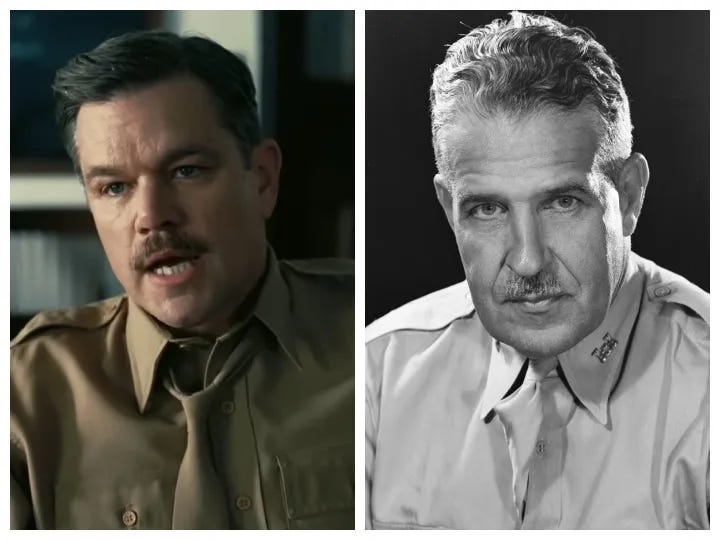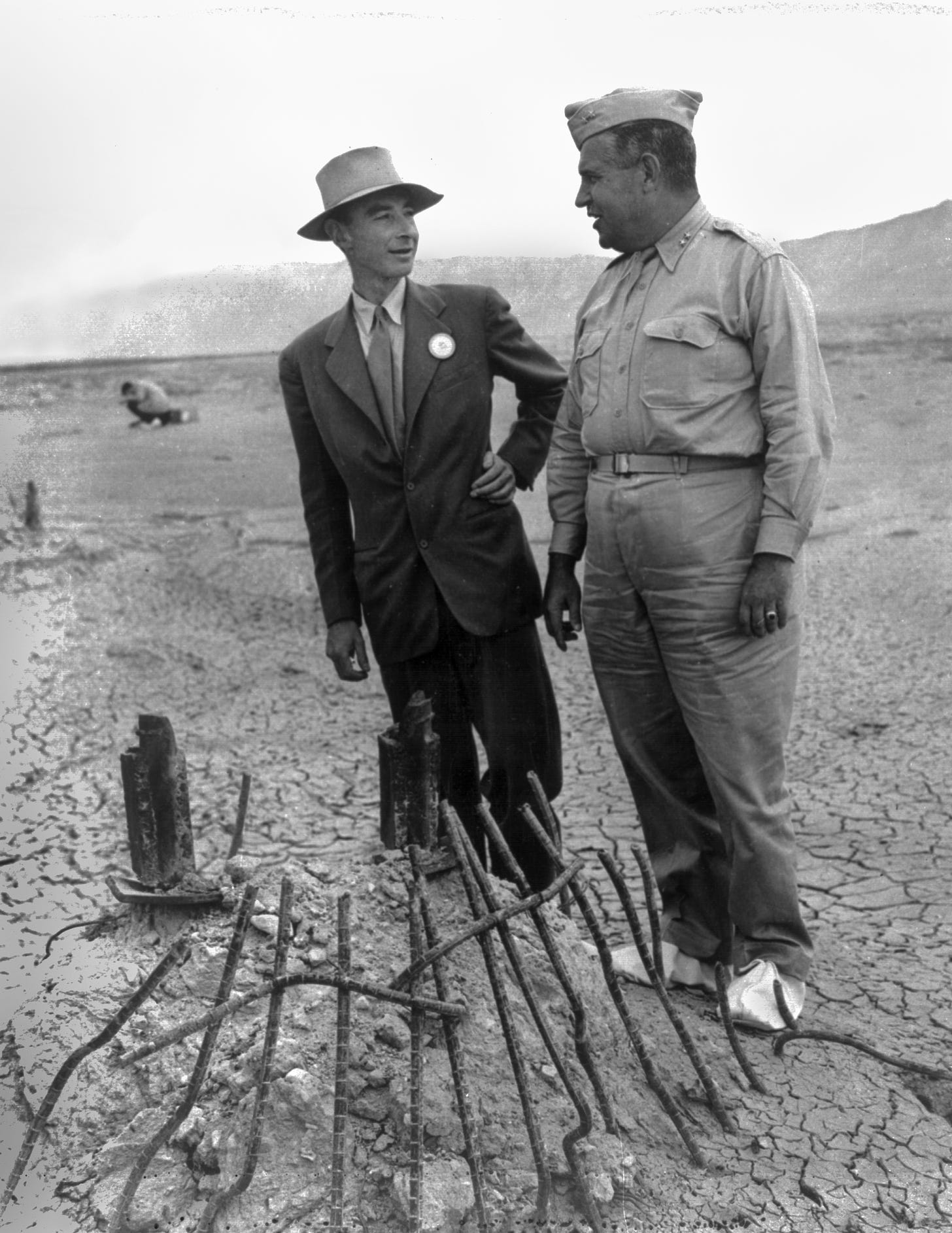Reprinted with permission from Greg Mitchell’s newsletter Oppenheimer: From Hiroshima to Hollywood.

I have noted previously here that Manhattan Project director Gen. Leslie R. Groves – depicted by Matt Damon in “Oppenheimer” as a tough cookie but smart, and basically a good guy – not only was the prime mover behind the use of the atomic bomb against Japan but in private conversation mocked early evidence of survivors afflicted with deadly radiation disease. Even as more of that evidence emerged in the weeks after the bombings, Groves gave little ground, influencing (due to his stature) the rather casual way the U.S, military and nuclear industrial sites would handle protection for soldiers and workers.
Seventy-eight years ago this week, Groves testified before a special U.S. Senate committee on Atomic Energy. The National Security Archive, which holds the transcript of the hearings, calls Groves’ testimony “bizarre and misleading.” Their summary on one portion:
On radioactivity and the bombings generally, Groves said that he saw no choice between inflicting radioactivity on a “few Japanese” and saving “10 times as many American lives.” He claimed that no one suffered radiation injury “excepting at the time that the bomb actually went off, and that is an instantaneous damage.”
Groves continued to go out on a limb by declaring that it “really would take an accident for … the average person, within the range of the bomb to be killed by radioactive effects.” Going further out on a limb, Groves stated that the victims of radiation whose exposure was not enough to kill them instantly would die “without undue suffering. In fact, they say it is a very pleasant way to die.”
While the Washington Post and the New York Times published accounts of the hearings, neither discussed Groves’ testimony on radiation effects. More from his testimony:
- Groves called the number of Japanese who suffered ill-effects, or death, from radiation exposure “relatively small.”
- He emphasized that there was nothing new nor troubling about radiation effects in adding to questions of the morality in the use of such weapons.
- “Radioactive effects are like X-rays. They depend upon the intensity and the time. Anyone who is working with such materials, who accidentally becomes overexposed, just takes a vacation away from the material and in due course of time he is perfectly all right again.”
Three months earlier, at the end of August – imagine if this scene had been included by Christopher Nolan in his movie? – Groves had chatted on the phone with Lt. Col. Charles Rea, a doctor at Oak Ridge hospital (part of the bomb project). According to the official transcript, released years later, Rea called the reports from Japan of death-by-radiation “propaganda,” “hookum,” and “kind of crazy” and Groves joked, “Of course, it’s crazy – a doctor like me can tell that!”
But Groves knew it wasn’t crazy and he grew agitated as he read passages from the Japanese reports. He even asked, seriously, if there was “any difference between Japanese blood and others.” Both men ultimately seized on the idea that everything was attributable to burns – or “good thermal burns,” as Rea put it. “They are getting the delayed action of the burn,” he advised. Groves replied, “Of course we are getting a good dose of propaganda” – and blamed some of our scientists and our media for giving the reports any credence.
Groves even bragged, “We are not bothered a bit, excepting for – what they are trying to do is create sympathy.” Adding: “This is the kind of thing that hurts us.” (See PDF of transcript.)
But Rea hinted that he knew Groves was merely denying reality, admitting finally, “Of course, those Jap scientists over there aren’t so dumb either.” Still, in a second conversation that day with Groves, Rea advised: “I think you had better get the anti-propagandists out.” One of the great quotes of that time. He also advised, “You will have to get some big-wig to put a counter-statement in the paper.” (That big-wig would end up being…. Oppenheimer, again not mentioned in the Nolan movie.)
Five days later, on a visit to Oak Ridge, Groves publicly labelled the reports from Japan propaganda and added, “The atomic bomb is not an inhuman weapon.”
Groves’ top aide, Kenneth D. Nichols (featured as a key Oppenheimer antagonist in the Nolan movie), would admit in his 1987 memoirs that “we knew that there would be many deaths and injuries caused by the radiation.…”

Thanks for reading Oppenheimer and the Legacy of His Bomb ! Subscribe for free to receive new posts and support my work.
Greg Mitchell is the author of a dozen books, including “Hiroshima in America,” and the recent award-winning The Beginning or the End: How Hollywood – and America – Learned to Stop Worrying and Love the Bomb, and has directed three documentary films since 2021, including two for PBS (plus award-winning “Atomic Cover-up”). He has written widely about the atomic bomb and atomic bombings, and their aftermath, for over forty years. He writes often at Oppenheimer: From Hiroshima to Hollywood.




I thought for a moment that the “Shady Groves” in the title was referencing a Washington DC suburb.
That aside – always a pleasure to read s**t that laymen with zero expertise in a scientific field say out loud. (particularly in the historical early days of various scientific disciplines) It’s like sci-fi themed episodes of ’60s vintage “Twilight Zone”. I’m like, “Oh jeez, you guys had NO idea how space and astrophysics work.”